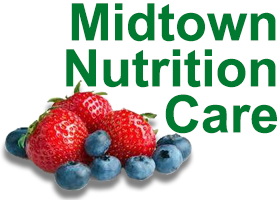MEAT LABELING
What do labels on chicken, beef or pork mean? Terms like “free range”, “organic”, and “antibiotic-free” are becoming more common, but they may not mean what you think they do. Some terms are regulated under the federal organic rule, some are independent of the organic rule, and some are not regulated at all.
ANTIBIOTIC-FREE
The USDA (U.S. Department of Agriculture) allows meat and poultry products to be labeled as “antibiotic free” or “no antibiotics added” with documentation of the animal being raised without antibiotics. The terms “no antibiotics ever” and “raised without the use of antibiotics” can also be used. Animals can be given antibiotics to treat or prevent disease. In that case, the animal must go through a specific time period after treatment, and before slaughter, to receive this label.
CAGE-FREE
This term is USDA regulated. It means that hens live uncaged in a barn, building, or other inside area. They must have unlimited access to food and water and be able to move around within the closed area. Cage-free does not mean the hens have access to the outdoor areas.
CERTIFIED HUMANE
This is not regulated by the USDA. Producers are certified by Humane Farm Animal Care. Producers must meet standards for things like space, shelter, handling, fresh water, and a diet free of added hormones and antibiotics. Cages, crates and tie stalls are not allowed. Animals must be able to engage in natural behaviors. For instance, chickens must be able to spread their wings and dust bathe, while pigs must have space to move around and root.
CHEMICAL-FREE
This term isn’t allowed on meat or poultry by the USDA. Terms like “naturally raised” or “drug-free” aren’t allowed either.
FREE RANGE OR FREE-ROAMING
This term is only regulated by the USDA for poultry raised for meat (not for hens that lay eggs). It means that the chickens have some access to the outdoors, although there is no requirement for how much time or what type/size the outdoor area is.
The USDA doesn’t define free range in terms of beef, pork or other nonpoultry animals or for hens that lay eggs. So if you see this term on these products, keep in mind that it has no standard meaning.
GRAIN FED
Under USDA regulations, a grain-fed diet for livestock includes barley, canola, corn, flaxseed, mixed grain, oats, rye, sorghum, soybeans, sunflower seed, triticale, and wheat. Other feed that may be allowed are rice, millet, amaranth, buckwheat and distiller’s grain.
GRASS FED
Under USDA regulations, grass fed means that grass and forage are the feed source for ruminant animals (such as cattle, sheep, bison and llamas) for the duration of their life after weaning. Animals can’t be fed grain or grain byproducts. They must have continuous access to pasture during the growing season. Hay, silage, crop residue without grain, cereal grain crops in the pregrain stage and other roughage sources are acceptable feed.
HORMONE-FREE
Under USDA regulations, this term isn’t allowed on meat products. Beef may be labeled as “no hormones administered” if producers document that the animals were raised without hormones.
Federal regulations prohibit the use of hormones in the raising of poultry, hogs, veal calves or exotic animals not subject to USDA inspection, such as bison. Therefore, claims of “no hormones added” can’t be used on labels for these products unless the label also states: “Federal regulations prohibit the use of hormones.”
NATURAL
Under USDA regulations, this term may be used on labeling for meat and poultry products if the product doesn’t contain any artificial flavor or flavoring, coloring ingredient, or chemical preservative, or any other artificial or synthetic ingredient; and if the product and its ingredients are not more than minimally processed. The product label must explain what is meant by natural, such as whether a food contains no added colorings. The term has no relevance to animal feeding or welfare.
NATURALLY RAISED
This is a voluntary marketing claim that manufacturers can choose to use on labels of meat and meat products. This term means that livestock have been raised entirely without growth promoters and antibiotics (except for parasite control), and that they have never been fed animal or aquatic byproducts derived from the slaughter or harvest processes. If a manufacturer chooses to use this term, it must be able to provide evidence to support the claim. The term has no relevance to animal welfare.
PASTURE RAISED
This term, sometimes referred to as “access to pasture,” is regulated as part of the National Organic Program of the USDA. Manufacturers who use this label must meet certain requirements, such as providing year-round access to the outdoors for all ruminant animals, providing them with pasture throughout the grazing season in their area, and ensuring that the animals get at least 30 percent of their dry-feed intake from pasture grazing over the course of grazing season.
VEGETARIAN FED
This term isn’t regulated by the USDA. It is generally means that an animal is fed a healthier diet and is raised without being fed animal byproducts or dairy products. According to the USDA, manufacturers that use this term on package labels must be able to provide evidence to support the claim.
